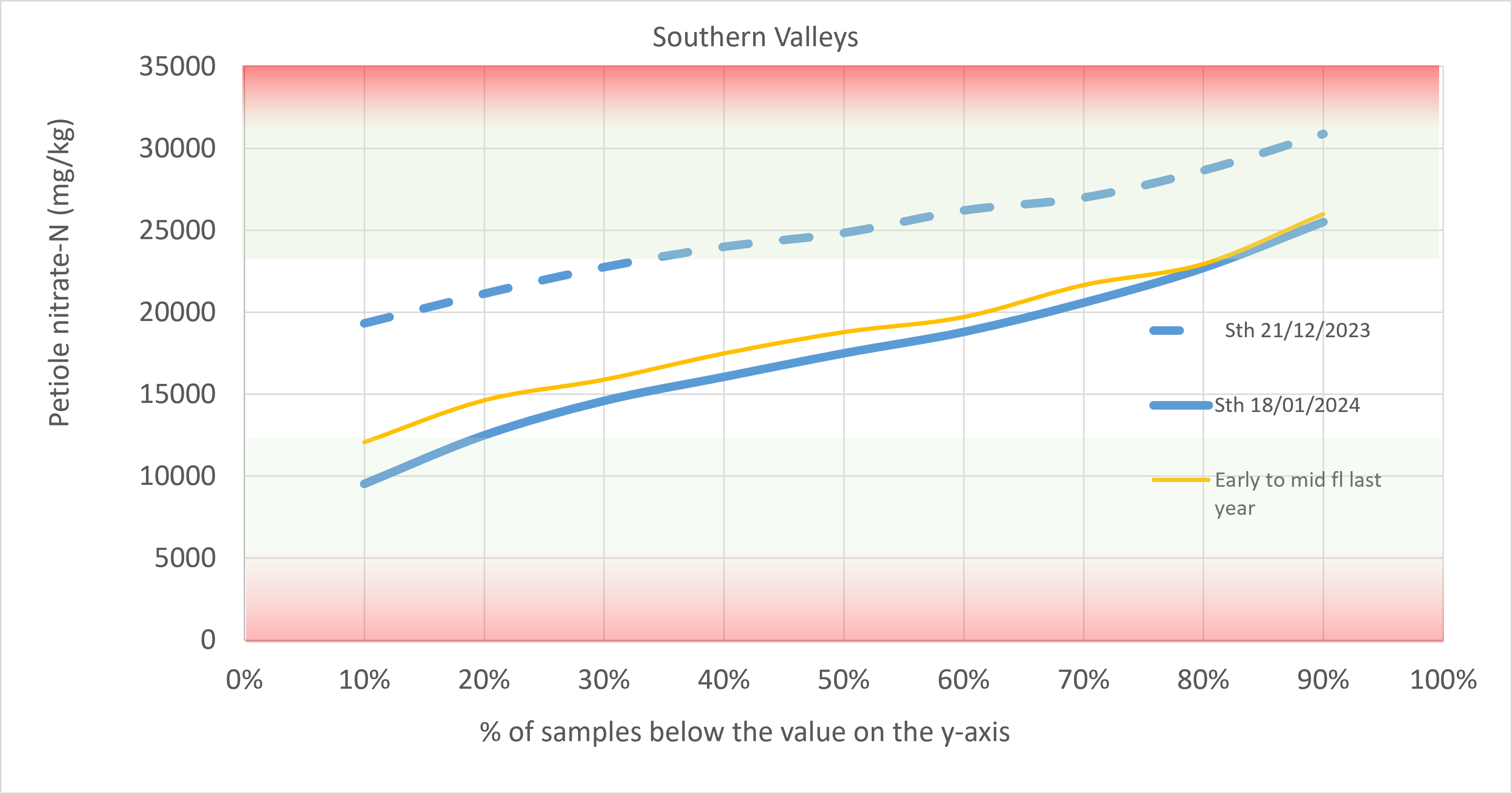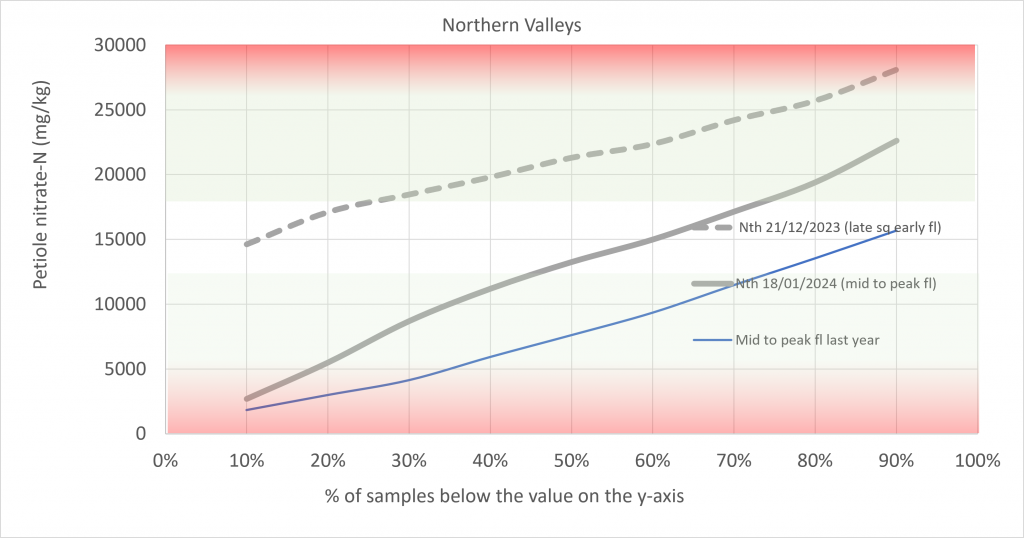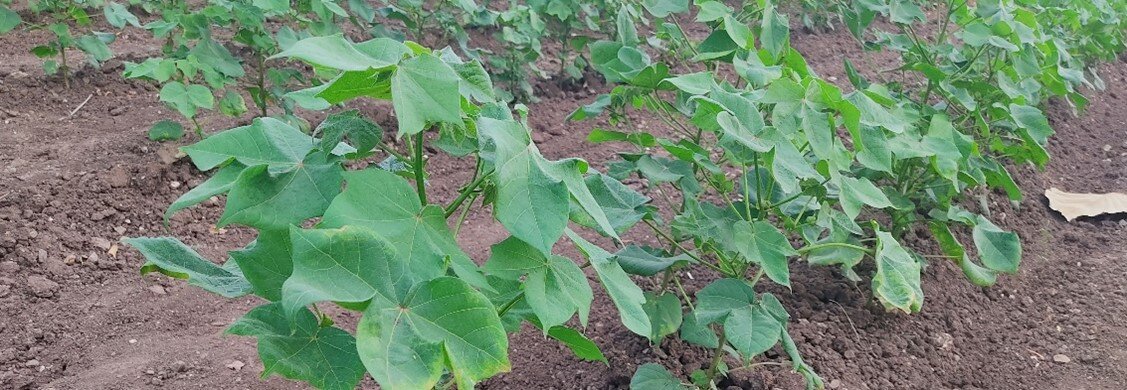Two very different scenarios for the northern and southern irrigated cotton crop N status compared to last season are emerging.
The irrigated cotton crops in northern and southern growing regions have progressed into flowering stages when N management can set up a smooth or problematic season finish. If not enough N, you will be battling early N-induced cutout and too much, creating the condition for negative impacts of overly vigorous crop.
According to the most recent lab results or the same crop stage (early to mid-flowering), petiole nitrate-N figures’ distribution looks very similar to last year, possibly a touch lower. Very few samples for this region are in the “ act now” range, as indicated by the red shading at the bottom of the petiole nitrate range.

In contrast, the northern numbers (mid to peak flowers) are significantly higher than last year but there were still 20 % of samples close to or in the red zone down from 40 % last years at the same crop stage.
No doubt exploring this data in more detail at the end of the season will be a bountiful source of insights to help better understand N management when we compare this year’s and last year’s data.
Is the difference the residual effect of last season’s preplant floods? Is it associated with a change in one or more of the 4Rs of N fertiliser management this season?

A quick word about potassium.
The window for effectively safeguarding areas prone to early K related senescence is fast closing. Once the symptoms are very obvious it is usually too late for effective treatment. In areas of high-risk foliar applications of K ( 4 – 8 kg/ha K) can be effective if applied before peak flowers.

